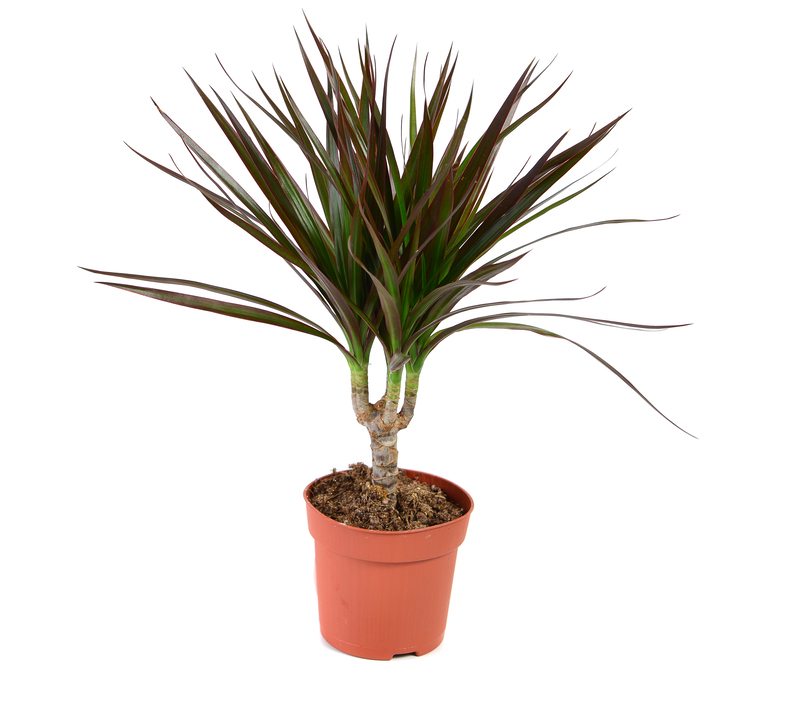Exploring the Wonders of Vertical Gardening
Posted on 24/06/2025
Vertical gardening has emerged as one of the most exciting trends in horticulture for city dwellers and gardening enthusiasts alike. With limited space, especially in urban settings, people are turning to vertical gardens as an innovative solution, transforming everyday walls and fences into lush, living masterpieces. But what exactly makes this method of gardening so special, and how can you get started?
In this comprehensive guide, we'll delve into the world of vertical gardening, exploring its numerous benefits, various types, practical solutions for every space, and pro tips to help you flourish. Whether you're a novice or a seasoned gardener, this article will provide all you need to know about the wonders of vertical gardening.
What is Vertical Gardening?
At its core, vertical gardening is the practice of growing plants upwards rather than outwards. By using vertical space--such as walls, fences, or custom-built structures--gardeners can cultivate flowers, herbs, vegetables, and even fruits in columns, layers, or stacked containers. This method has the power to turn even the tiniest balcony or drab interior wall into a verdant, thriving oasis.
Core Principles of Vertical Planting
- Utilization of Vertical Space: Making the most of unused or underutilized spaces.
- Support and Structure: Providing adequate anchoring for climbing or trailing plants.
- Soil and Water Management: Ensuring proper drainage and efficient watering techniques.
- Plant Selection: Choosing plant species that thrive in a vertical garden environment.

Benefits of Vertical Gardening
Vertical gardening is more than just an aesthetic choice. Let's take a closer look at the substantial advantages this gardening style offers:
Maximizing Limited Space
Perhaps the greatest appeal of a vertical garden is its space-saving prowess. Small balconies, patios, urban terraces, and even indoor rooms can be adorned with vibrant plantation without sacrificing precious floor space.
Air Purification and Health Benefits
The capacity of plants to improve air quality is well-documented. A living wall or a vertical plant wall can absorb pollutants, release oxygen, and even help regulate indoor temperatures, making homes and offices healthier and more pleasant.
Thermal Insulation & Energy Efficiency
Vertical gardens on building exteriors act as natural thermal insulators. They reduce heat absorption in summer and add a layer of protection during colder months, which can lead to significant energy savings.
Visual Appeal and Increased Property Value
Imagine a drab wall transformed into a lush, green spectacle. The visual impact of a flourishing vertical garden is undeniable, often boosting a property's curb appeal and market value.
Biodiversity and Wildlife Support
Vertical planting systems can become a haven for birds, bees, and beneficial insects, contributing to urban biodiversity and a healthier ecosystem.
Types of Vertical Gardens
There are various styles and structures that can suit any taste, budget, or space:
- Living Walls or Green Walls: These are sophisticated installations featuring modular panels containing soil or hydroponic systems. Living walls are often found indoors or as building facades and can cover large surfaces.
- Trellises and Climbing Structures: From classic wooden trellises to modern metal designs, these support climbing plants like jasmine, ivy, and beans.
- Pocket Gardens: Fabric or felt pockets fixed to a wall can hold soil and support herbs or small flowering plants. They are perfect for edible vertical gardens.
- Hanging Planters and Shelves: Pots hanging from rods or shelves stacked vertically are affordable and adaptable for balconies or small patios.
- Pallet Gardens: Repurposed wooden pallets serve as rustic, eco-friendly planting structures for herbs, succulents, or ornamentals.
Best Plants for Vertical Gardening
When it comes to vertical garden plants, selecting the right varieties is crucial for success. Here's a list of popular and low-maintenance options:
- Herbs: Basil, mint, parsley, thyme, oregano, and cilantro are compact and thrive in small pockets.
- Leafy Greens: Spinach, lettuce, Swiss chard, and kale add freshness to any vertical structure.
- Small Fruits: Strawberries and cherry tomatoes perform well in vertical setups.
- Ornamental Plants: Ferns, succulents, spider plants, and pothos provide striking foliage and easy growth.
- Flowering Vines: Morning glories and sweet peas offer beauty and attract pollinators.
Note: Always consider lighting, wind exposure, and temperature when choosing plants for your vertical gardening project.
How to Build Your Own Vertical Garden: Step-by-Step
1. Choosing the Right Location
- Assess Sunlight: Most vertical garden systems require at least 4-6 hours of sunlight a day.
- Accessibility: Ensure the spot is easy to water, maintain, and harvest.
- Protection from Elements: Consider windbreaks or partial shelters for delicate plants.
2. Select Your Structure
From store-bought vertical planting kits to creative DIY solutions using pallets, gutters, or recycled bottles, select a structure that fits your space, climate, and aesthetic preferences.
3. Prepare the Support and Mounting System
- Secure heavy structures into studs or brick for safety.
- Use waterproof lining if mounting indoors to prevent wall damage.
4. Soil and Irrigation
Opt for lightweight, high-quality potting soil. Incorporate slow-release fertilizers and ensure excellent drainage to avoid root rot.
Consider drip irrigation systems or vertical self-watering inserts to make plant care easy and water-efficient.
5. Plant Selection and Arrangement
- Group plants by water and sunlight needs for each row.
- Place trailing or cascading varieties higher for a layered effect.
- Install taller plants at the bottom for balance and ease of access.
6. Routine Care and Maintenance
Regularly check moisture levels, remove dead foliage, and re-fertilize as needed. Inspect for pests and address any disease promptly.
Vertical Gardening Indoors vs Outdoors
Indoor vertical gardens can dramatically boost air quality and aesthetics in homes or offices. Here's a comparison between indoor and outdoor installations:
- Lighting: Indoor gardens may require grow lights to supplement natural light.
- Humidity: Houseplants benefit from increased humidity in indoor vertical plantings.
- Climate: Outdoor vertical gardens should be geared towards weather-resistant varieties.
- Space: Indoors, compact wall-mounted, or freestanding towers are ideal. Outdoors, you have more flexibility with size and scale.
Sustainability: The Eco-Friendly Side of Vertical Gardening
Vertical gardens are eco-conscious by design. They make use of recycled materials, reduce urban heat, and minimize the need for pesticides. With the rise of sustainable gardening practices, many enthusiasts incorporate upcycled bottles, pallets, or fabric to reduce their carbon footprint.
- Water Conservation: Drip systems reduce waste.
- Urban Greening: Living walls combat the urban heat island effect.
- Recycling: Use of reclaimed materials for planters and supports.
Creative Vertical Gardening Ideas
If you're eager to try this trend, here are some unique ideas to get your creativity sprouting:
- Shoe Organizer Garden: Repurpose old fabric shoe holders for herb gardens on a sunny wall.
- Gutter Gardens: Cut old rain gutters into sections, fill with soil, and mount in rows.
- Hanging Bottle Garden: String recycled plastic bottles together for a quirky, budget-friendly solution.
- Modular Wall Planters: Stack geometric pots into interesting living wall art.
- Herb Towers: Stack pots or barrels vertically for a compact herb spiral.
Common Challenges and Solutions in Vertical Gardening
- Uneven Water Distribution: Use self-watering systems or water thoroughly from top to bottom.
- Weight and Wall Safety: Always secure to strong supports; opt for lightweight soils and structures.
- Pests and Diseases: Regularly inspect and rotate plants to prevent pest buildup.
- Overcrowding: Follow recommended spacing for each plant to avoid competition and disease.

Frequently Asked Questions about Vertical Gardening
1. Can you grow vegetables in a vertical garden?
Absolutely! Leafy greens, cherry tomatoes, peppers, and even squash can thrive in vertical gardens with proper support and care.
2. How much maintenance does a vertical garden need?
It depends: Modular systems with good irrigation require minimal day-to-day care, but regular trimming, feeding, and occasional replanting are needed.
3. Do vertical gardens damage walls?
With proper waterproofing and supports, vertical plant walls will not harm indoor or outdoor surfaces. Always use a waterproof barrier if mounting items directly to building walls.
4. What is the cost of starting a vertical garden?
You can start small with DIY recycled materials for free, or invest in modular commercial systems costing anywhere from $50 to $500 depending on size and complexity.
5. Do vertical gardens work for apartments?
Yes! Vertical gardening is ideal for apartments, offering lush greenery without taking up floor space. Choose compact hanging shelves, pocket planters, or desktop towers for small interiors.
Conclusion: Embrace the Vertical Green Revolution
Vertical gardening is much more than a trend: it's a joyful, practical, and eco-conscious approach to bringing greenery into every corner of our lives. With some creativity and planning, you can transform even a small wall into a lush, productive vertical oasis.
Whether your goal is to maximize your small-space gardening efforts, purify your living air, or create stunning green art, the wonders of vertical gardening are accessible to everyone. Take the plunge, experiment, and watch your vertical space come alive!
Start exploring your vertical garden ideas today -- and experience the beauty, bounty, and benefits firsthand!

